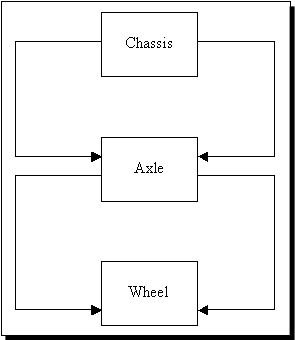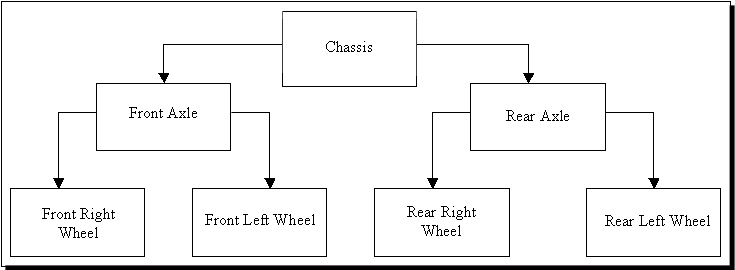
The following is an example assembly that we offer before we discuss the various Knowledge Fusion assembly strategies. Suppose that we want to construct a simple assembly that is a chassis consisting of two axles, front and rear, each of which has two wheels, left and right. In NX an assembly is constructed, not by specifying explicitly each node in the assembly tree, but by constructing an instance graph the explosion of which results in the assembly tree whose nodes are occurrences (copies by reference) of part files.
Thus in our "Chassis" example we would perform the following steps:
1. Create part "Wheel":
2. Create part "Axle" and add two instances of "Wheel" and name them "Left" and "Right".
3. Create part "Chassis" and add two instances of "Axis" and name them "Front" and "Rear".
This results in an instance graph:

Note that not all nodes of the assembly tree have been explicitly specified but only the three relevant part files. If the instance graph is exploded then we implicitly obtain the required assembly where each node in the hierarchy is an NX part occurrence, which is a copy, by reference, of an NX part file. In the NX world all occurrences of some part, like the 'Wheel" for example must, necessarily, have the same content but can be independently located in the assembly space. The graph explosion gives us:
